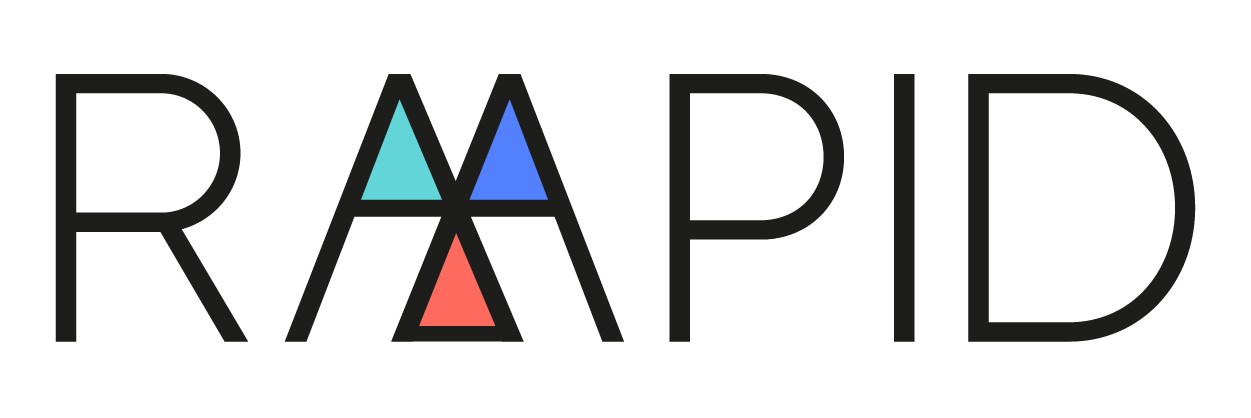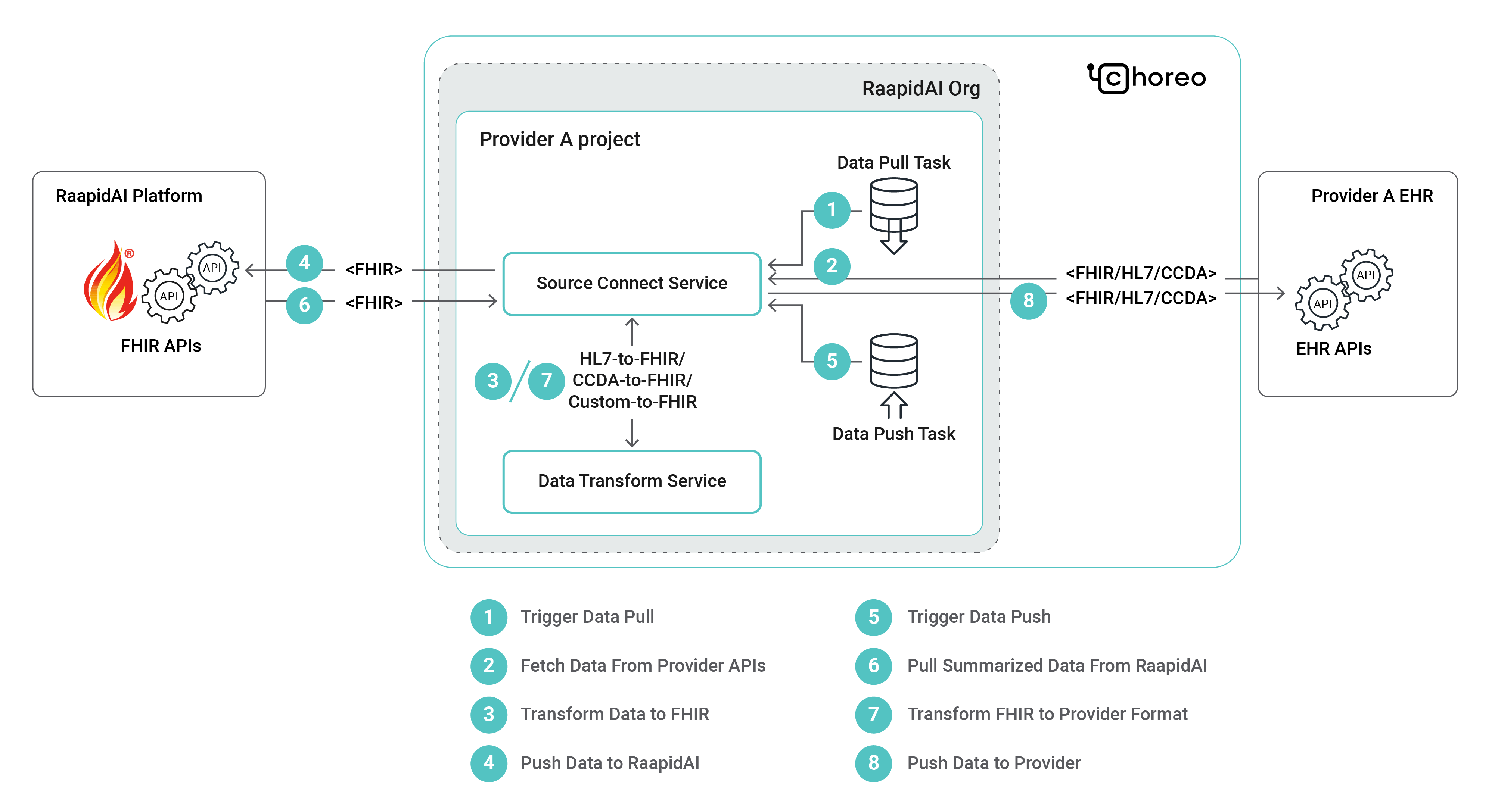RAAPID.AI's mission is to address a critical challenge within the healthcare, insurance, and technology sectors. They aim to revolutionize risk adjustment by empowering the healthcare ecosystem with comprehensive solutions and Hierarchical Condition Category (HCC) coding services. This transformation enables healthcare providers to secure rightful reimbursements for patient care while upholding the highest standards of healthcare quality.

Overview
In pursuit of its mission, RAAPID.AI is actively developing a cutting-edge SaaS platform. A significant aspect of this development centers around establishing a robust integration layer that seamlessly connects RAAPID.AI with a diverse clientele, including hospitals and insurance companies. A key focus during this phase is the aggregation and transformation of data, facilitating the conversion of various data formats, such as HL7, into the universal FHIR standard. This interoperability ensures that RAAPID.AI can effortlessly exchange and utilize crucial healthcare information for the benefit of all stakeholders.
Challenges
In pursuing re-imagining risk adjustment for healthcare, RAAPID.AI encountered the formidable challenges below.
-
Data heterogeneity: One of the primary challenges encountered by RAAPID.AI was dealing with the diverse and often inconsistent data formats across various healthcare providers. Integrating data from sources with different protocols and standards, such as FHIR, HL7, and CCDA, required intricate handling and mapping.
-
Scalability: As RAAPID.AI expanded its clientele and introduced new projects for each healthcare provider, ensuring the scalability and performance of the integration solution became critical. Adapting the system to meet the growing demands of data synchronization was a continuous challenge.
-
Data security and compliance: Healthcare data is highly sensitive and subject to strict regulatory compliance requirements. RAAPID.AI had to ensure that the integration process maintained data privacy and met all necessary legal and security standards.
-
Customization complexity: While the modular approach allowed for flexibility and customization for each healthcare provider, it also presented challenges in managing and maintaining a variety of different project configurations. Ensuring that each project was tailored to the unique needs of its corresponding provider required dedicated effort.
Solution
RAAPID.AI's innovative integration solution revolves around creating dedicated projects within WSO2 Choreo for each healthcare provider. This modular approach involves configuring components to pull data from Electronic Health Records (EHR) via various protocols like FHIR, HL7, or CCDA. Ballerina's data transformation capabilities are harnessed to convert the retrieved medical data into FHIR format before pushing it back to RAAPID.AI's platform through FHIR/REST APIs. Additionally, another component facilitates the pulling and transformation of summarized data, ensuring seamless data flow between the healthcare providers and RAAPID.AI platform.

The key components of the solution are listed below.
-
Project creation: RAAPID.AI administrators create a dedicated project for each healthcare provider within WSO2 Choreo, intending to connect and sync data with the RAAPID.AI platform. Each project contains a set of components designed to fulfill specific functionalities needed for data synchronization.
-
Data pulling: A component is configured to trigger data pulling from the Electronic Health Record (EHR) of the provider. The data is retrieved using a configured protocol (FHIR/HL7/CCDA).
-
Data transformation: The retrieved medical data is transformed into the FHIR format using Ballerina's powerful data manipulation capabilities.
-
Data pushing: The transformed data is then pushed back to the FHIR/REST APIs of the RAAPID.AI platform, ensuring the data is available in a standardized format for further processing.
-
Data summarization and pushing: Another component is set up to trigger the pulling of processed summary data. This data is transformed into the source system format using Ballerina and then pushed back to the provider's system.
Benefits
The benefits of how Ballerina can be effectively used for complex data integration tasks in the healthcare sector include the following.
-
Efficient data synchronization: Ballerina enables efficient data synchronization between different systems, ensuring data consistency across platforms.
-
Data transformation: Ballerina's powerful data manipulation capabilities allow for easy transformation of data into different formats, facilitating interoperability between systems.
-
Standardization: With built-in support for the FHIR standard, Ballerina facilitates standardized healthcare data, improving data quality and usability.
-
Automation: The use of triggers for data pulling and pushing automates the data integration process, reducing manual effort and increasing efficiency.
Conclusion
RAAPID.AI's successful integration of Ballerina into healthcare data synchronization represents cutting-edge healthcare innovation. Ballerina streamlines data integration, providing a robust solution for healthcare providers. Its prebuilt health packages and services simplify development, while the modular project setup and data transformation capabilities ensure efficient data exchange. This approach supports RAAPID.AI's mission and demonstrates Ballerina's transformative power in healthcare integration as RAAPID.AI continues to push healthcare technology boundaries.